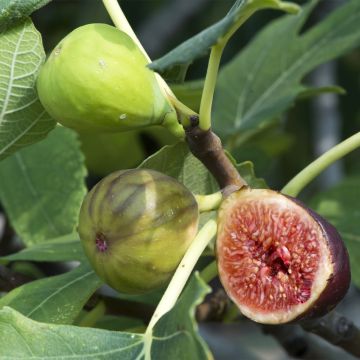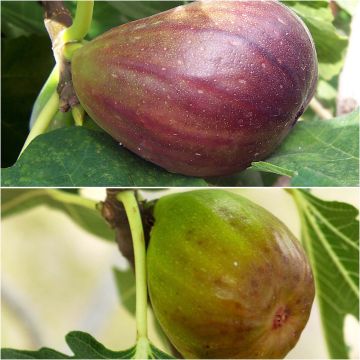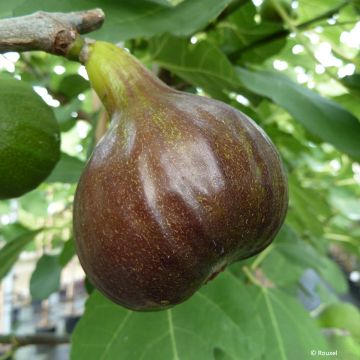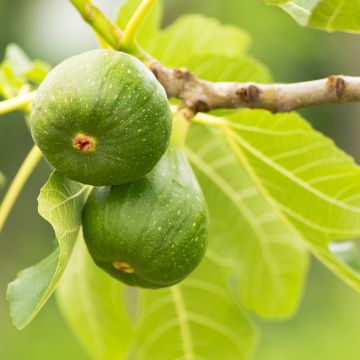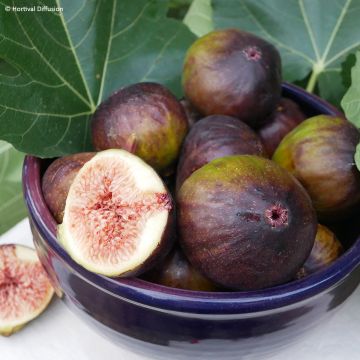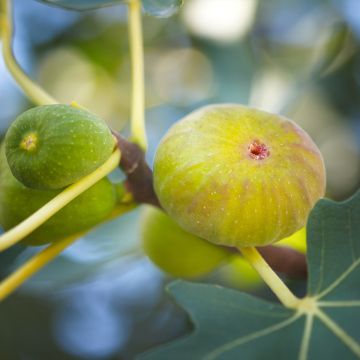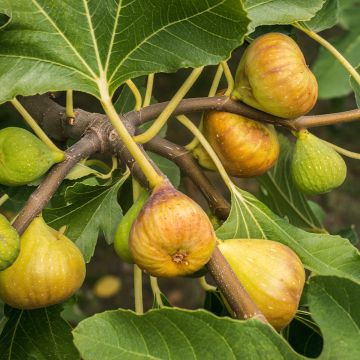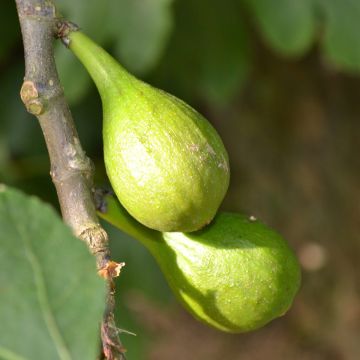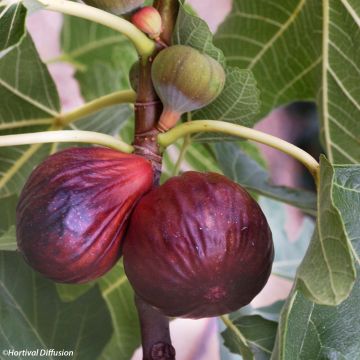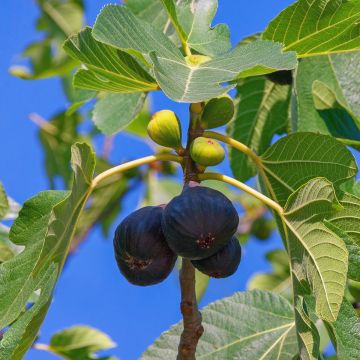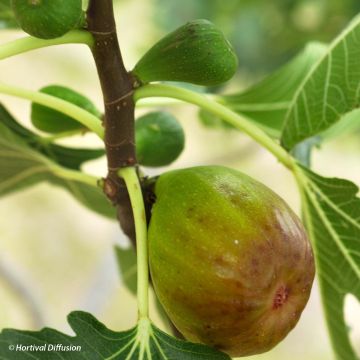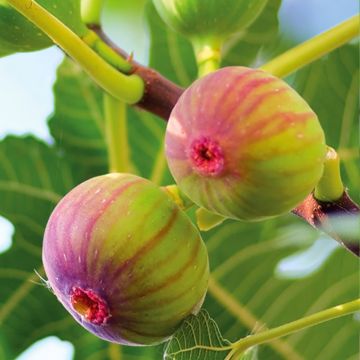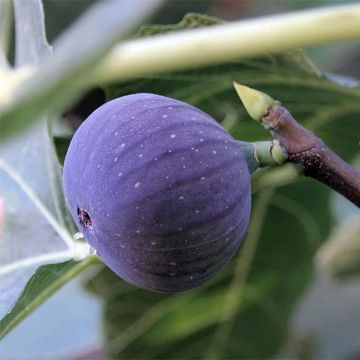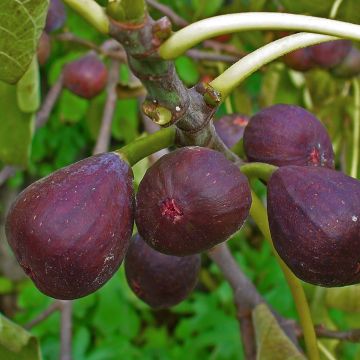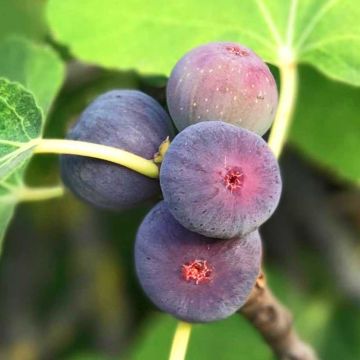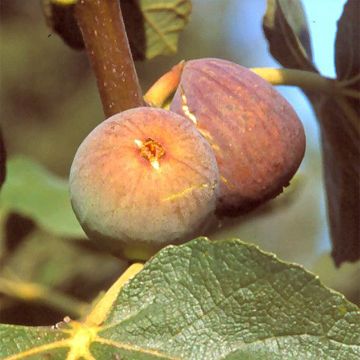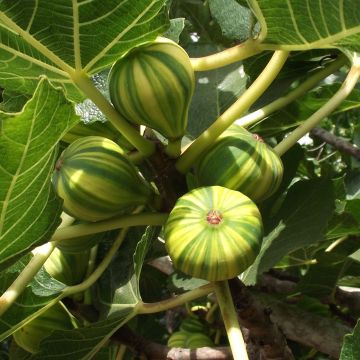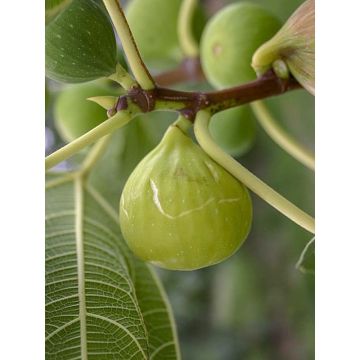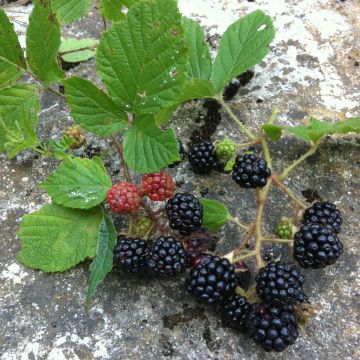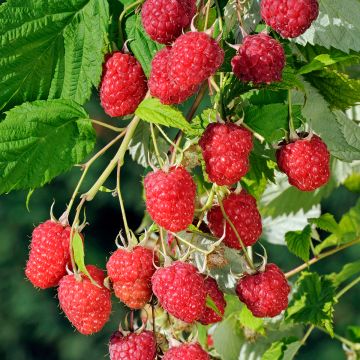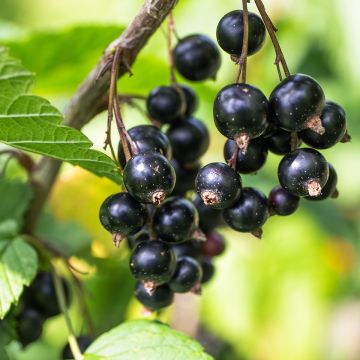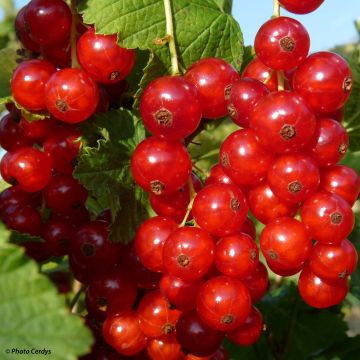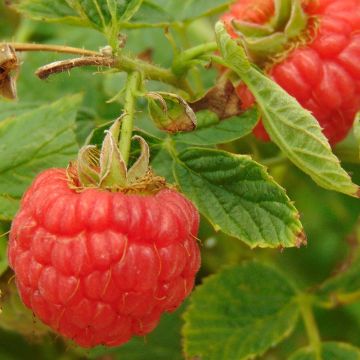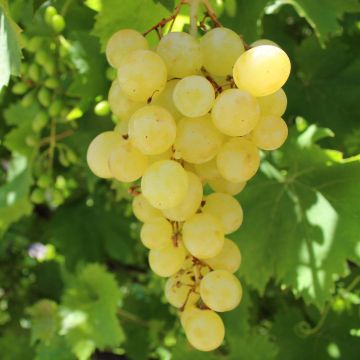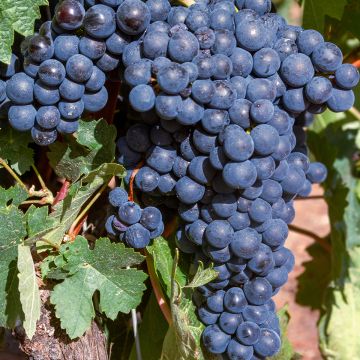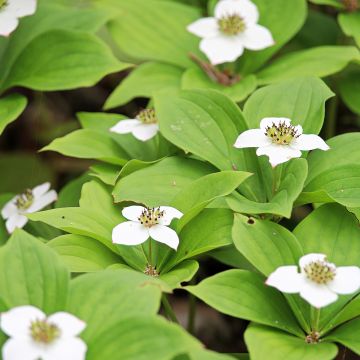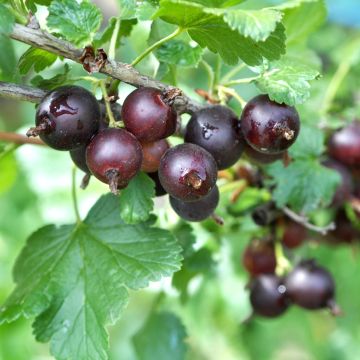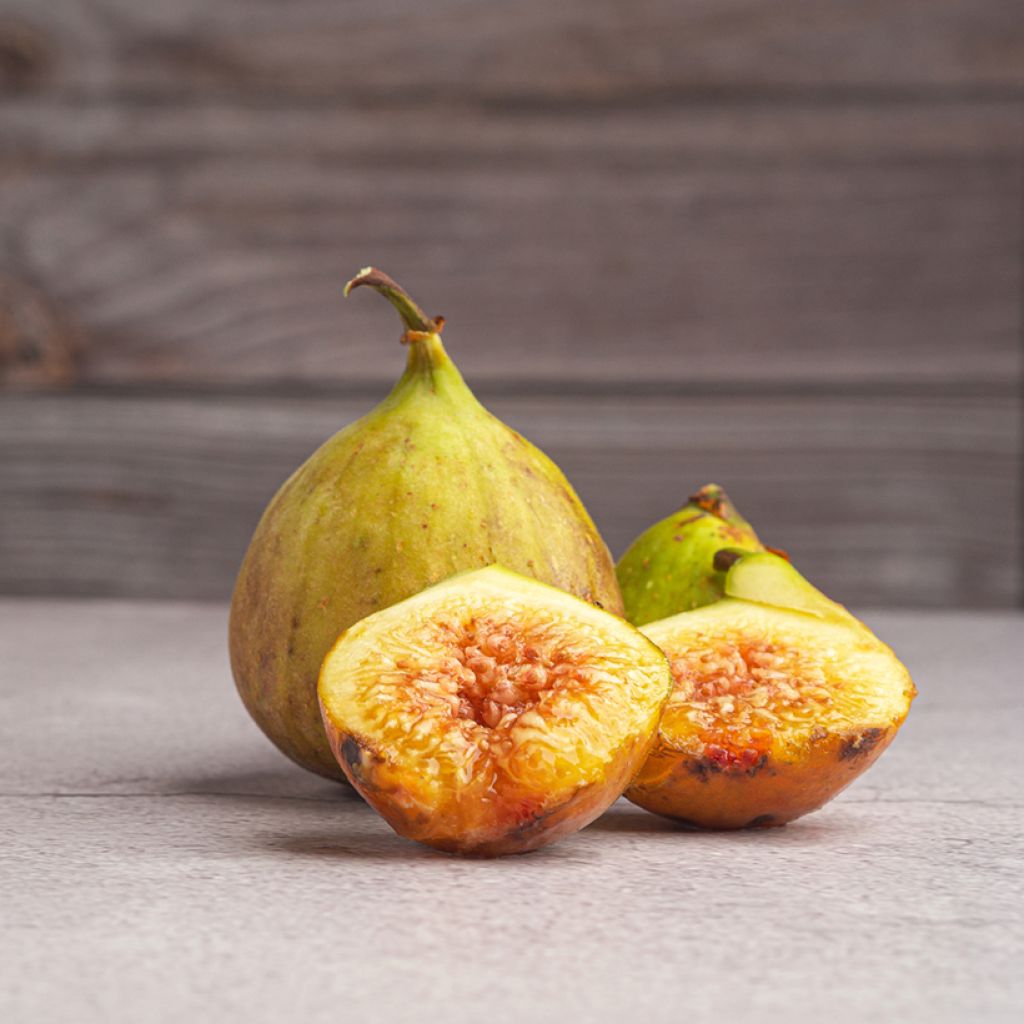

Figuier Gustis Ficcolino - Ficus carica
Ficus carica Gustis Ficcolino
Ficus carica Gustis ® Ficcolino
Common Fig, Fig Tree
Why not try an alternative variety in stock?
View all →This plant carries a 6 months recovery warranty
More information
We guarantee the quality of our plants for a full growing cycle, and will replace at our expense any plant that fails to recover under normal climatic and planting conditions.
From €5.90 for pickup delivery and €6.90 for home delivery
Express home delivery from €8.90.
Delivery to Corse prohibited: UE law prohibits the import of this plant from mainland France to Corse as part of the fight against Xylella fastidiosa. Please accept our sincere apologies.
More information
Description
The Ficus carica Gustis Ficcolino is a recent variety originating from Switzerland. It is characterized by its high productivity, great hardiness, double summer and autumn fructification, and compact habit. It produces small to medium-sized figs, pear-shaped, with a thin and smooth skin, greenish-yellow in color, then yellowish-green when ripe. The fruit, with its red pulp, is juicy and very sweet, containing numerous small seeds (achenes), which can be eaten fresh after picking or utilised in various recipes. Very decorative, with its architectural habit, this fig tree offers many possibilities for integration in the garden, or on a balcony or terrace. Plant in frost-free autumn-winter (or in spring for colder regions). It is not prone to diseases and requires almost no maintenance.
Originating from regions with a warm temperate climate, ranging from the Mediterranean to Central Asia, the Fig tree (Ficus carica) belongs to the Moraceae family. Generally, it does not exceed three to four meters in height and has a fairly twisted trunk and a bushy habit. The deciduous leaves reach up to 25 cm (9.8 in) in length, divided into three to seven lobes with variable shape. The undersides of the leaves are velvety and show prominent veins. The wood, with its smooth gray bark, is soft, spongy, and hollow.
The Gustis Ficcolino variety forms a small, vigorous tree with a rounded and branched habit, reaching between 1.60 and 1.90 m (5 ft 2 in and 6 ft 2 in) in height and 1.20 to 1.50 m (3 ft 11 in to 4 ft 11 in) in width at maturity (7 to 10 years). Ficcolino is a self-fertile and biferous variety, meaning it bears fruit twice, first from late June, then in early September, if the climatic conditions are favorable. Among Fig trees, there are:
- uniferous varieties, producing a single, abundant harvest per year, at the beginning of autumn.
- biferous varieties, bearing fruit twice a year, producing figs called 'flower figs' in early summer, appearing on the previous year's wood, and autumn figs, developing on the current year's branches.
Among all the Fig tree varieties, the Gustis Ficcolino Fig tree abundantly produces flower figs of about 40 to 70 g in late June, then figs of 60 to 90 g in September-October. This staggered fruiting ensures a harvest of delicious figs throughout the season. The harvest will be done several times as the fruits ripen. It is a self-fertile and parthenocarpic variety, allowing fruit set without fertilization. It does not require other Fig tree plants and does not need the intervention of the fig wasp, the sole pollinating insect of the fig tree, which is too sensitive to survive in cold climates.
Rich in fiber, the Fig has laxative properties and the seeds aid digestion. It is rich in minerals, trace elements, and vitamin B. To preserve the Fig's flavors after harvest, it is not recommended to store them in the refrigerator as the skin can suffer from humidity and condensation.
The Fig tree is often considered one of the most beautiful fruit trees. Its unique foliage gives it an ornamental aspect and provides a beautiful shaded area. Plant the Gustis Ficcolino Fig tree against a wall that will protect it from the cold during harsh winters, with a south or southwest exposure, either alone, integrated into a flowerbed, or in a large pot on a sunny terrace or balcony. Its small and compact habit allows it to be propagated succesfully in a pot in colder egions that can be bought indoors when tenperatures drop below -10°C.
It is important to choose the right variety based on the climate, garden size, and desired use of the fruits.
Ficus carica Gustis Ficcolino in pictures
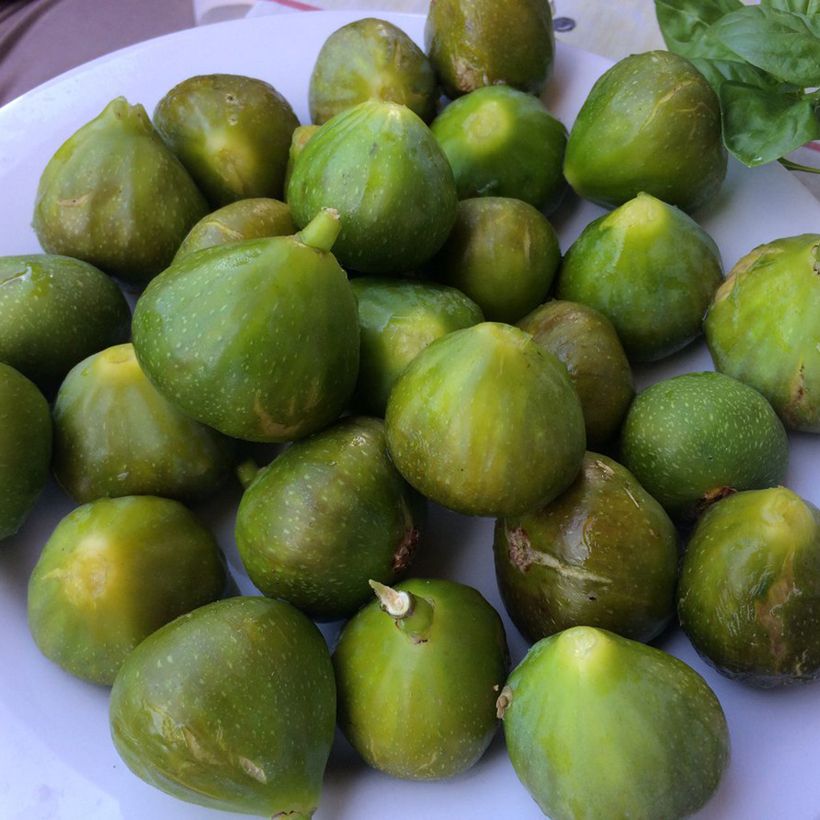

Plant habit
Fruit
Flowering
Foliage
Botanical data
Ficus
carica
Gustis ® Ficcolino
Moraceae
Common Fig, Fig Tree
Cultivar or hybrid
Other Fig trees
Planting and care
The Fig tree can be grown in most types of soil, even poor, rocky, and dry ones, but prefers deep, loose soils with a sufficient limestone content. It requires a sunny exposure and protection from strong winds (south or southwest) in order to bear fruit well. In summary, the fig tree likes to be warm and have its head in the sun, which is important for the ripening of the fruits in summer. At the time of planting, create a layer of gravel at the bottom of the planting hole and add a mixture of garden soil and mature compost or topsoil.
Water well during the first two years following planting, especially during the summer, as its root system, although capable of drawing water deeply from the soil, is not sufficiently developed. Plant from November to the end of March, outside of freezing periods. In colder regions, it is preferable to plant early in the spring. It is a hardy tree but not suited to montainous climates. The aboveground parts can be damaged by cold (young branches from -15-17°C (5-62.6 °F), flower buds from -10-12°C (14-53.6 °F), it will regrow from the stump until -20°C (-4 °F).
For pot planting: place a layer of gravel or clay pebbles at the bottom of the pot to facilitate drainage. Add a layer of soil and then place the plant and cover with a mixture of 2/3 gardem soil, 1/3 topsoil or mature compost. Topdress every spring, by replacing the surface layer with fresh topsoil. Water regularly and moderately. At the end of autumn, protect the pot with insulation before winter frosts.
The Fig tree is not very susceptible to diseases and pests.
Planting period
Intended location
Care
This item has not been reviewed yet - be the first to leave a review about it.
Berries
Haven't found what you were looking for?
Hardiness is the lowest winter temperature a plant can endure without suffering serious damage or even dying. However, hardiness is affected by location (a sheltered area, such as a patio), protection (winter cover) and soil type (hardiness is improved by well-drained soil).

Photo Sharing Terms & Conditions
In order to encourage gardeners to interact and share their experiences, Promesse de fleurs offers various media enabling content to be uploaded onto its Site - in particular via the ‘Photo sharing’ module.
The User agrees to refrain from:
- Posting any content that is illegal, prejudicial, insulting, racist, inciteful to hatred, revisionist, contrary to public decency, that infringes on privacy or on the privacy rights of third parties, in particular the publicity rights of persons and goods, intellectual property rights, or the right to privacy.
- Submitting content on behalf of a third party;
- Impersonate the identity of a third party and/or publish any personal information about a third party;
In general, the User undertakes to refrain from any unethical behaviour.
All Content (in particular text, comments, files, images, photos, videos, creative works, etc.), which may be subject to property or intellectual property rights, image or other private rights, shall remain the property of the User, subject to the limited rights granted by the terms of the licence granted by Promesse de fleurs as stated below. Users are at liberty to publish or not to publish such Content on the Site, notably via the ‘Photo Sharing’ facility, and accept that this Content shall be made public and freely accessible, notably on the Internet.
Users further acknowledge, undertake to have ,and guarantee that they hold all necessary rights and permissions to publish such material on the Site, in particular with regard to the legislation in force pertaining to any privacy, property, intellectual property, image, or contractual rights, or rights of any other nature. By publishing such Content on the Site, Users acknowledge accepting full liability as publishers of the Content within the meaning of the law, and grant Promesse de fleurs, free of charge, an inclusive, worldwide licence for the said Content for the entire duration of its publication, including all reproduction, representation, up/downloading, displaying, performing, transmission, and storage rights.
Users also grant permission for their name to be linked to the Content and accept that this link may not always be made available.
By engaging in posting material, Users consent to their Content becoming automatically accessible on the Internet, in particular on other sites and/or blogs and/or web pages of the Promesse de fleurs site, including in particular social pages and the Promesse de fleurs catalogue.
Users may secure the removal of entrusted content free of charge by issuing a simple request via our contact form.

































